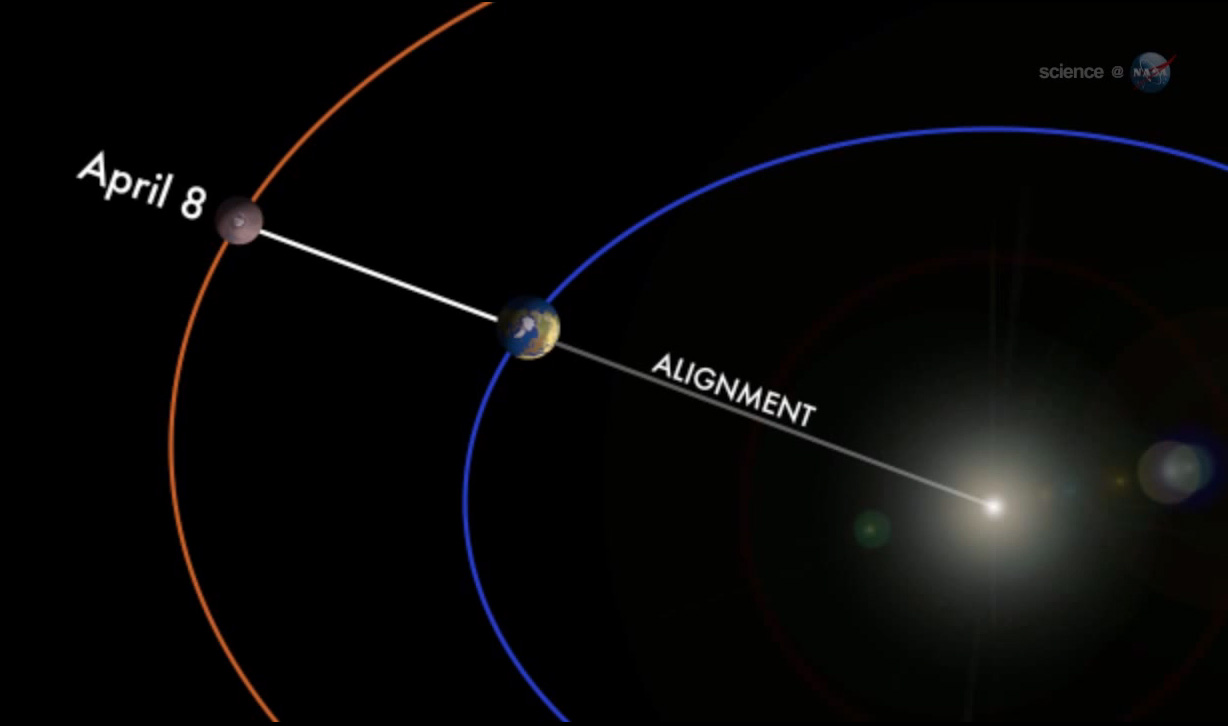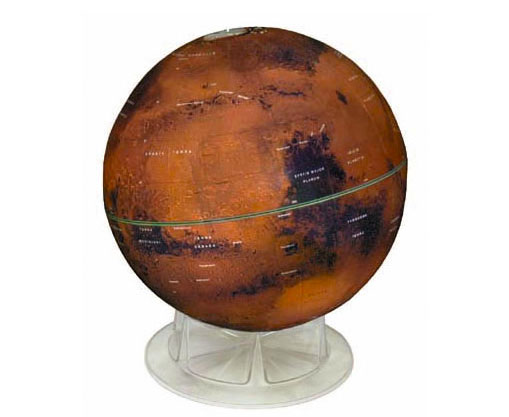
Mars aligns with the sun and Earth today (April 8) in a cosmic event that occurs just once every 26 months, and you can watch it all unfold live online.
The Red Planet and the sun sit directly opposite each other in Earth's sky today, which is why the formation is known as an opposition of Mars. You can watch two live shows about the Mars opposition here on Space.com beginning at 7 p.m. EDT (2300 GMT) tonight, courtesy of the Virtual Telescope Project and the Slooh. You can also watch the two webcasts directly via the Virtual Telescope Project website and Slooh website.
During opposition, Mars will shine nearly 10 times more brightly than a 1st-magnitude star, and some of the planet's surface features will show up through backyard telescopes, Slooh officials said. [Mars Coming Close: Where to Look (Video)]

Mars "is the only planet in the universe that shows distinct and sometimes detailed surface features through our telescopes," Slooh astronomer Bob Berman said in a statement. "It is also the most Earth-like body in the known universe, with oxygen copiously bound into its soil, and water contained in its ices.
"Therefore, during the brief few weeks when it comes near to us every 26 months, it deserves the limelight," Berman added. "This year it hovers next to Virgo’s hot blue 'alpha' star Spica, creating a striking orange-and-blue color contrast that’s out all night long, and impossible to miss."
Both of tonight's shows will feature up-close looks at the Red Planet. The Virtual Telescope Project's webcast kicks things off at 7 p.m. EDT; Slooh's show — which will also discuss the activities of NASA's Curiosity rover and the possibility of finding signs of life on Mars — follows at 10 p.m. EDT (0200 GMT on April 9).

The opposition of Mars comes about a week before the Red Planet's closest approach to Earth. On April 14, Mars will be just 57 million miles (92 million kilometers) away — about 60 percent of the distance from Earth to the sun (which is 93 million miles, or 150 million km). (Opposition and closest approach would occur on the same day if the planets' orbits were perfectly circular rather than slightly elliptical.)
Get the Space.com Newsletter
Breaking space news, the latest updates on rocket launches, skywatching events and more!
April 14 is a busy day for space enthusiasts. That date also features a total lunar eclipse, as well as the launch of SpaceX's third NASA-contracted cargo mission to the International Space Station.
Editor's note: If you take an amazing skywatching photo of Mars or any other night sky view, and you'd like to share it for a possible story or image gallery, please contact managing editor Tariq Malik at spacephotos@space.com.
Follow Mike Wall on Twitter @michaeldwall and Google+. Follow us @Spacedotcom, Facebook or Google+. Originally published on Space.com.

Join our Space Forums to keep talking space on the latest missions, night sky and more! And if you have a news tip, correction or comment, let us know at: community@space.com.

Michael Wall is a Senior Space Writer with Space.com and joined the team in 2010. He primarily covers exoplanets, spaceflight and military space, but has been known to dabble in the space art beat. His book about the search for alien life, "Out There," was published on Nov. 13, 2018. Before becoming a science writer, Michael worked as a herpetologist and wildlife biologist. He has a Ph.D. in evolutionary biology from the University of Sydney, Australia, a bachelor's degree from the University of Arizona, and a graduate certificate in science writing from the University of California, Santa Cruz. To find out what his latest project is, you can follow Michael on Twitter.









